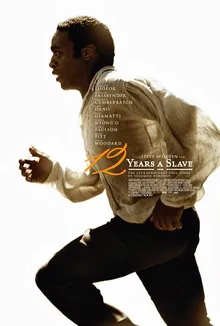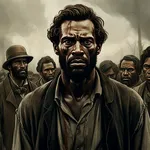Historical accuracy of 12 Years a Slave

Historical accuracy of 12 Years a Slave

- 1619
First African slavery in colonies
- 1641
Law of hereditary slavery enacted
- 1787
Slavery prohibited in Northwest
- 1787
US constitution protects slavery
- 1841
Solomon Northup enslaved
- 1853
Solomon Northup freed
- 1861
American Civil War begins
- 1865
Slavery abolished
Characters
Solomon Northup's kidnapping
Solomon Northup was indeed a free man who was kidnapped and sold into slavery. This is the core of the film and his memoir.
Sold to William Ford
Northup was initially sold to William Ford, who was a relatively kind slave owner.
Edwin Epps' cruelty
Edwin Epps is portrayed as a brutal slave owner, and this aligns with historical accounts and Northup's own experiences.
Patsey's abuse by Epps
The film accurately depicts the horrific abuse Patsey endured at the hands of Epps, including sexual assault and physical violence.
John Tibeats' antagonism
John Tibeats was a carpenter who clashed with Northup, as depicted in the film. Tibeats's cruelty is documented in Northup's memoir.
Mistress Epps' jealousy of Patsey
Epps' wife was indeed jealous of Patsey and treated her cruelly, as shown in the film.
More characters
Samuel Bass's intervention
Samuel Bass was a real person who argued with Epps about the morality of slavery and helped Northup regain his freedom.
Story
Northup's whipping scene
The film's graphic depiction of Northup's whipping is based on his own account and reflects the brutal reality of slavery.
Northup's near-lynching
It is true that Northup was almost lynched by Tibeats and other men. And he was saved by the intervention of William Ford. The film does however take some creative liberties in this scene.
Northup's reunion with family
After 12 years, Northup was reunited with his family in New York.
Setting
Depiction of slave labor
The film accurately portrays the harsh conditions and backbreaking labor endured by enslaved people on plantations.
Depiction of slave music
The film incorporates authentic slave songs and spirituals, reflecting the importance of music in their lives.
Depiction of slave culture
The film portrays the resilience, community, and hidden acts of resistance among enslaved people.
Overall
Overall historical accuracy
12 Years a Slave' is considered one of the most historically accurate portrayals of slavery in American cinema. It closely follows Northup's memoir and avoids significant embellishments or distortions.
The real history behind 12 Years a Slave
Kidnapping of free African Americans

The terror of kidnapping and enslavement haunted free African Americans in the 19th century. Despite legal freedom, they lived under constant threat. "Slave catchers" and opportunistic criminals routinely seized individuals, selling them into the brutal system of Southern slavery.
These kidnappings were often facilitated by corrupt officials and the lack of robust legal protection. Families were torn apart, and individuals lost their freedom without recourse. "Reverse Underground Railroads" operated, moving people South into slavery, rather than North to freedom. The fear was pervasive, forcing many free Black communities to live in a state of perpetual anxiety, knowing their freedom could be stolen at any moment. This practice highlighted the precariousness of freedom for Black Americans before the Civil War.
